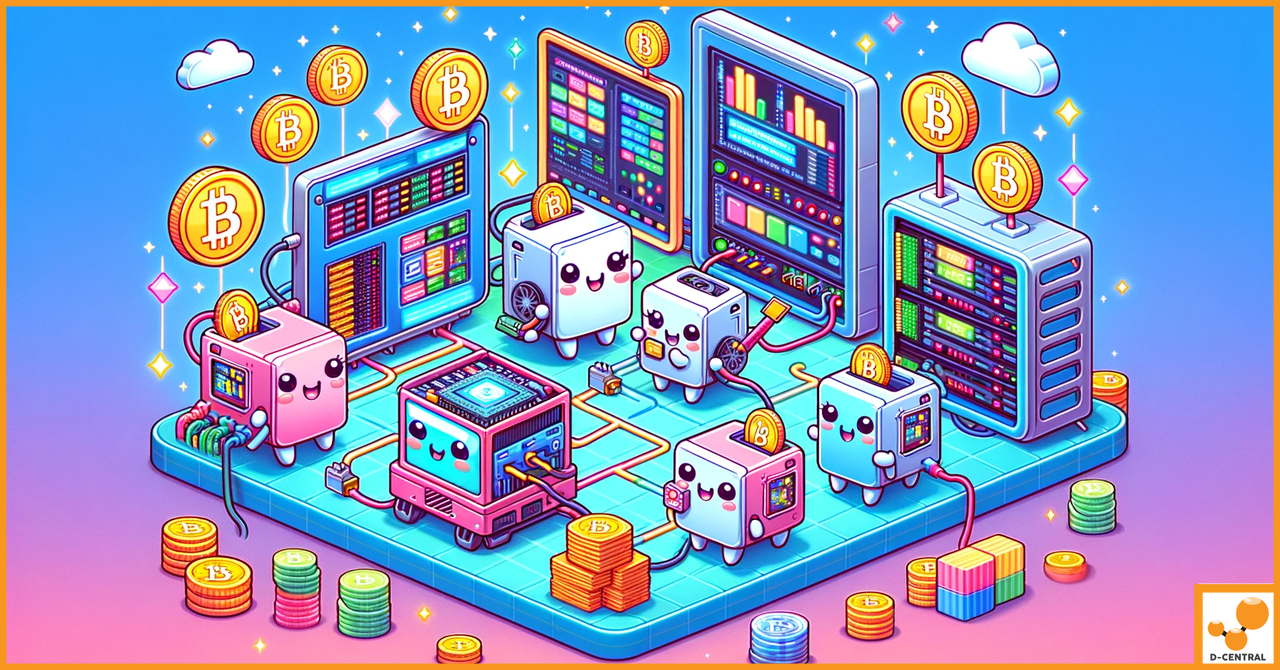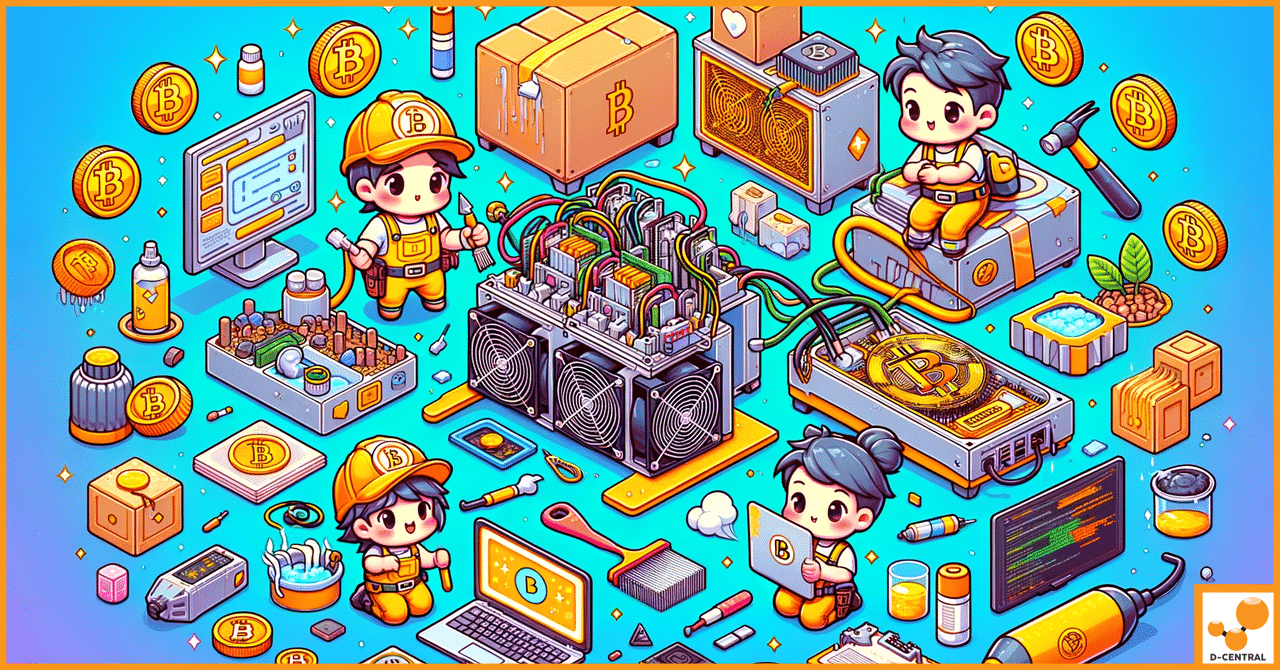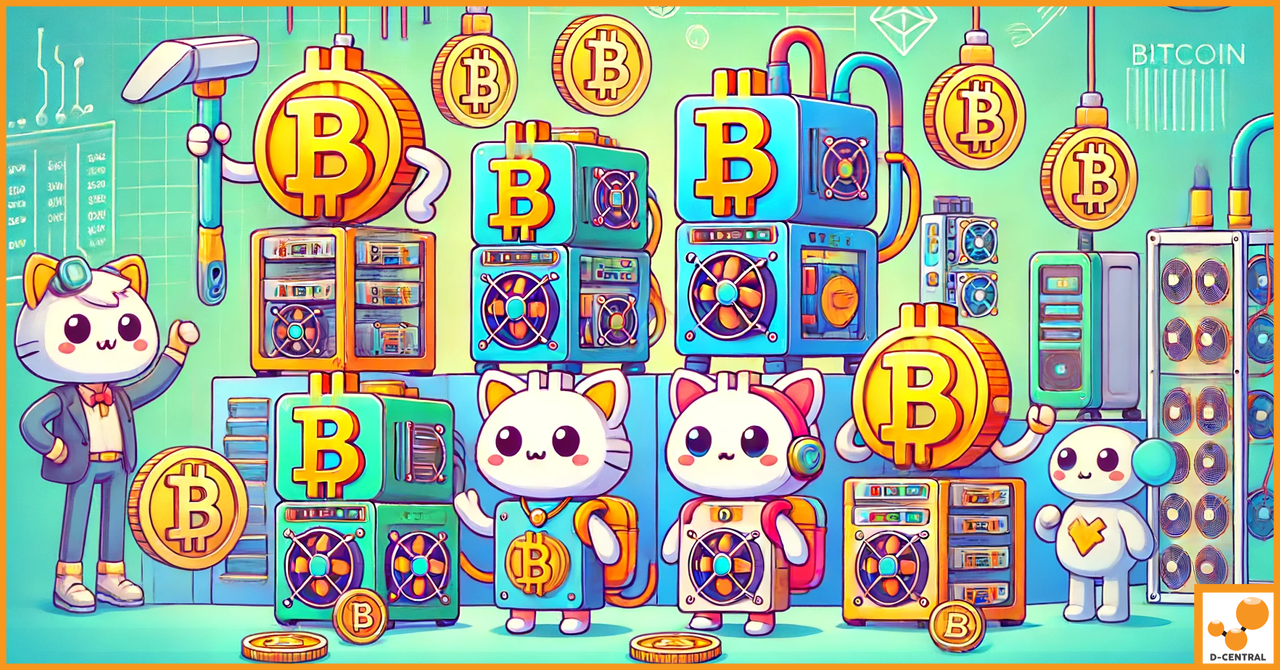
The Ultimate Guide to Safe and Effective Antminer Overclocking
In the ever-evolving world of cryptocurrency, Bitcoin mining stands as a cornerstone activity, underpinning the decentralized ethos of digital currency.
4479 Desserte Nord Autoroute 440, Laval, QC H7P 6E2

In the dynamic world of digital currencies, cryptocurrency mining has emerged as a cornerstone, powering the blockchain technology that underpins these decentralized financial systems. Since the inception of Bitcoin in 2009, cryptocurrency mining has evolved from a niche hobby for tech enthusiasts to a sophisticated industry that demands significant computational power and energy resources. This evolution reflects not only the growing complexity of mining tasks but also the escalating competition among miners to earn rewards in the form of new digital tokens.
Cryptocurrency mining, at its core, involves validating transactions and adding them to a public ledger, known as the blockchain. Initially, individuals could mine cryptocurrencies using personal computers. However, as the difficulty of mining increased, the need for more powerful and specialized hardware, such as ASIC (Application-Specific Integrated Circuit) miners, became apparent. This shift marked the transition from solo mining to more organized, efficient practices, leading to the emergence of mining pools and large-scale mining farms.
Enter the concept of colocation mining – a solution that has rapidly gained traction in the crypto mining community. Colocation mining refers to the practice of housing individually-owned mining equipment in specially designed data centers. These facilities provide optimal mining conditions, including enhanced power supply, robust cooling systems, and advanced security measures. By leveraging the resources and expertise of these dedicated centers, miners can significantly improve the efficiency and profitability of their operations.
The growing importance of colocation mining in the crypto world cannot be overstated. As the competition intensifies and the complexity of mining algorithms increases, the advantages offered by colocation facilities become increasingly valuable. These centers not only alleviate the burden of managing and maintaining mining hardware but also offer scalability and reliability, which are crucial in an industry where uptime directly correlates with revenue generation.
In this comprehensive guide, we delve into the intricacies of cryptocurrency colocation mining, exploring its benefits, challenges, and future prospects. Whether you’re a seasoned miner or new to the world of cryptocurrency, understanding the role and impact of colocation mining is essential in navigating this ever-evolving landscape.
Cryptocurrency colocation mining is a modern approach to digital currency mining that addresses many of the challenges faced by individual miners. At its essence, colocation mining involves placing one’s cryptocurrency mining equipment in a specialized facility designed specifically for mining activities. These facilities, often referred to as colocation centers or data centers, are equipped with the necessary infrastructure to optimize the mining process. This includes advanced cooling systems, industrial-grade power supplies, high-speed internet connections, and robust security measures.
Historical Context and the Shift from Individual to Colocation Mining
The journey from individual to colocation mining mirrors the evolution of the cryptocurrency industry itself. In the early days of Bitcoin, mining was a relatively simple task that could be performed on standard home computers. However, as the network grew and the mining difficulty increased, the need for more powerful, specialized hardware became evident. This led to the development of high-performance ASIC miners, which are far more efficient but also more expensive and demanding in terms of power and cooling requirements.
As individual miners grappled with these challenges, including rising energy costs, noise, and heat generation, the concept of colocation mining emerged as a viable solution. Colocation centers offered a professional, optimized environment for mining, allowing miners to deploy their equipment in a setting that maximized efficiency and minimized operational hassles. This shift marked a significant turning point, transforming cryptocurrency mining from a hobbyist activity into a professional, industrial-scale operation.
Key Components of Colocation Mining
In summary, cryptocurrency colocation mining represents a significant advancement in the way digital currencies are mined. It offers a solution that balances the high demands of mining hardware with the need for efficiency, security, and scalability, making it an increasingly popular choice among serious miners.
Cryptocurrency colocation mining has become a game-changer in the digital currency landscape, offering a plethora of benefits that address the limitations of traditional home mining setups. Here are some of the key advantages:
In essence, colocation mining provides a comprehensive solution that not only enhances the efficiency and profitability of cryptocurrency mining operations but also significantly reduces the operational challenges and risks associated with it. This makes it an attractive option for both new entrants and experienced miners in the cryptocurrency world.
Selecting the appropriate colocation partner is a critical decision for any cryptocurrency miner. The right facility can significantly enhance the profitability and sustainability of your mining operations. Here are key factors to consider when choosing a colocation facility:
Choosing the right colocation partner involves a careful evaluation of various factors, including infrastructure, location, security, cost, and the facility’s ability to meet your specific needs. A well-chosen colocation facility can be a powerful ally in maximizing the efficiency and profitability of your cryptocurrency mining endeavors.
While colocation mining offers numerous benefits, it also comes with its own set of challenges and considerations. Understanding these is crucial for anyone looking to venture into or expand their presence in this field.
While colocation mining presents an attractive opportunity for efficient and profitable cryptocurrency mining, it requires careful consideration of various regulatory, operational, and market factors. Being well-informed and prepared for these challenges can help ensure the success and sustainability of your colocation mining venture.
In the rapidly evolving world of cryptocurrency mining, D-Central Technologies stands out as a trailblazer, offering a suite of services and innovative solutions that cater to the diverse needs of the mining community. As a leader in the Bitcoin mining industry, D-Central Technologies has established itself as a trusted partner for miners, regardless of their scale of operations.
Founded with a vision to democratize access to cryptocurrency mining, D-Central Technologies has grown into Canada’s premier ASIC repair center. Our comprehensive range of services includes consultation, sourcing of mining hardware, hosting mining operations, ASIC repairs, and maintenance training. We also provide extensive support and outsourcing solutions for mining operations, making us a one-stop shop for all mining needs.
Highlighting D-Central’s Unique Offerings
D-Central Technologies is not just a service provider but a partner in the mining journey. Our innovative solutions, expert guidance, and unwavering commitment to client success make us a leader in the field of cryptocurrency colocation mining. Whether you are starting out or looking to expand your mining operations, D-Central Technologies is here to help you achieve your mining goals.
In this comprehensive exploration of cryptocurrency colocation mining, we have delved into various facets of this increasingly important sector. From understanding the basics of colocation mining and its benefits, such as cost-effectiveness, enhanced power and cooling efficiency, and improved hardware maintenance and security, to navigating the challenges and considering the future prospects, it’s clear that colocation mining is a significant player in the broader cryptocurrency mining landscape.
Colocation mining has emerged as a pivotal element in the cryptocurrency mining ecosystem. It addresses the complexities and challenges of modern-day mining by providing a scalable, secure, and efficient environment. This evolution signifies a maturing market, moving from individual, small-scale operations to more sophisticated, large-scale mining endeavors.
For those looking to embark on or enhance their cryptocurrency mining journey, D-Central Technologies offers a wealth of expertise and innovative solutions. Whether you’re a small-scale miner seeking to expand or a large-scale operation needing robust hosting services, D-Central Technologies has the resources and knowledge to support your goals.
What is Cryptocurrency Colocation Mining?
Cryptocurrency colocation mining involves placing mining equipment in specialized data centers designed to optimize the mining process, providing advanced power supply, cooling, and security, as well as maintenance and support services.
How has cryptocurrency mining evolved over time?
Cryptocurrency mining has evolved from a hobbyist activity performed on personal computers to a sophisticated industry that requires powerful, specialized hardware such as ASIC miners, leading to the adoption of more organized, efficient practices like colocation mining.
What are the key benefits of colocation mining?
Key benefits of colocation mining include cost-effectiveness, enhanced power and cooling efficiency, improved hardware maintenance and security, access to professional expertise, and scalability.
What factors should be considered when choosing a colocation mining partner?
Key factors to consider include the quality of the center’s infrastructure, its operational expertise, scalability, location, security, uptime, cost structures, flexibility, and community and support offered.
What are the challenges in colocation mining?
Challenges within colocation mining consist of navigating regulatory compliance, managing operational risks such as equipment security and insurance, reliability of power and internet, handling market volatility, among others.
What is the role of D-Central Technologies in the colocation mining industry?
D-Central Technologies is a leading service provider in the Bitcoin mining industry, offering consultation, sourcing of mining hardware, hosting, ASIC repairs, maintenance training, and broad support for mining operations. They also innovate with unique Bitcoin Space Heaters and provide custom solutions.
How does D-Central Technologies support cryptocurrency miners?
D-Central Technologies supports miners through a suite of services, including expert consultation, hardware sourcing and hosting, repairs, and training. Additionally, they offer customized hardware modifications, refurbished equipment sales, and innovative products like Bitcoin Space Heaters.
DISCLAIMER: D-Central Technologies and its associated content, including this blog, do not serve as financial advisors or official investment advisors. The insights and opinions shared here or by any guests featured in our content are provided purely for informational and educational purposes. Such communications should not be interpreted as financial, investment, legal, tax, or any form of specific advice. We are committed to advancing the knowledge and understanding of Bitcoin and its potential impact on society. However, we urge our community to proceed with caution and informed judgment in all related endeavors.
Related Posts

In the ever-evolving world of cryptocurrency, Bitcoin mining stands as a cornerstone activity, underpinning the decentralized ethos of digital currency.

In the rapidly evolving world of cryptocurrency mining, Application-Specific Integrated Circuit (ASIC) miners have emerged as the cornerstone of the

The interest in Bitcoin home mining has seen a significant rise in 2024 as more individuals look to participate in